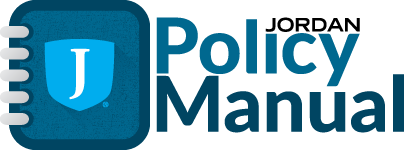- Effective: 2/9/1982
- Revision: 6/11/2019
- Board Directive
The Board recognizes the importance of an orderly process to arrive at negotiated settlements with the recognized exclusive representatives and bargaining agents of employee groups (licensed and educational support professionals, excluding administrators). The Board, therefore, delegates to the Administration the responsibility of conducting good faith negotiations within the parameters set by the Board and reporting those negotiations to the Board.
- Administrative Policy
The employee agent group is defined as the professional employee association with the largest membership based on full-time equivalent employees. The Administration will recommend to the Board a negotiating team to represent the Board in conducting negotiations with recognized employee groups according to approved administrative policy provisions.
- The licensed employees will be represented through the Joint Relations Committee, which will be comprised of the Board’s negotiating team and the negotiating team for the licensed employee group. Team membership will be established no later than October 1 of each school year. The mission of the Joint Relations Committee is to enhance the professional employee association/District relationship by fostering open communication and a free exchange of ideas and to identify and resolve issues in a collaborative environment to allow us to provide a quality education for every child in Jordan School District.
- Regularly scheduled meetings (monthly) of the Joint Relations Committee (Licensed – Policy A3) will be held to review and discuss policies, including compensation discussions, to begin no earlier than May 1 of each contract year. Dates can be changed by mutual agreement.
- Formal negotiations meeting dates will be determined no later than May 1 of each contract year.
- Beginning with the first formal negotiating session, procedural agreements concerning negotiations will be mutually established.
- Changes in compensation and negotiated policy will be considered and finalized through the negotiation process.
- The District shall comply with Utah Code 53G-11-206 and will require reimbursement to the school district of the cost of paid association leave activities to the extent required by the Code.
- After June 15, if agreement has not been reached in negotiations, the Board or the employee agent group or both parties may declare an impasse.
- Immediately after declaration of impasse by either party, the Board will invite the employee agent group to participate in mediation using the services of the Federal Mediation and Conciliation Service. The role of the mediator will be to facilitate communication. All costs associated with mediation will be shared equally by the Board and the employee agent group.
- If mediation is not completed or otherwise terminated within forty-five (45) days after the appointment of a mediator, further mediation may continue at the discretion of the Board.
- A negotiated agreement entered into by the Board will be posted on the District’s website within ten (10) days of ratification of the agreement.
- Results of negotiations will be released in separate but simultaneous meetings by the Board of Education and Jordan Education Association.
Revision history: 3/27/2018
2/25/2020: Board of Education approved the term “Education Support Professionals” to replace “Classified” to describe personnel not licensed as educators.
